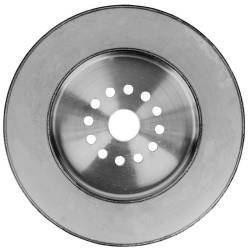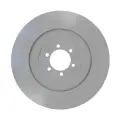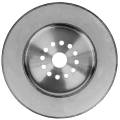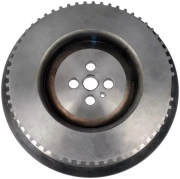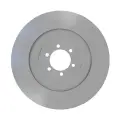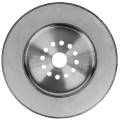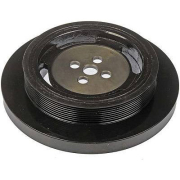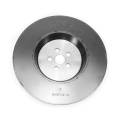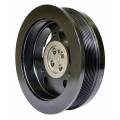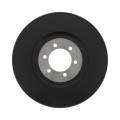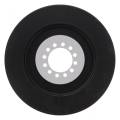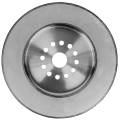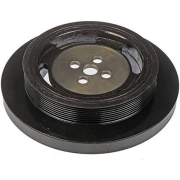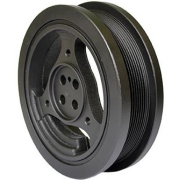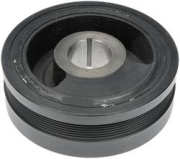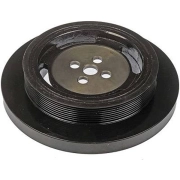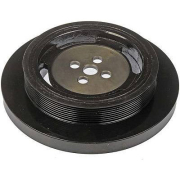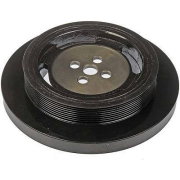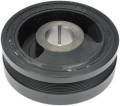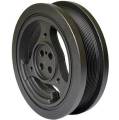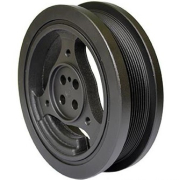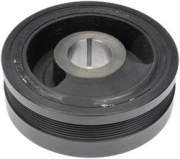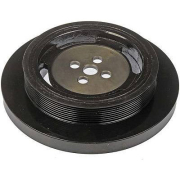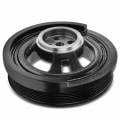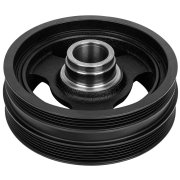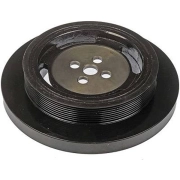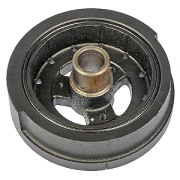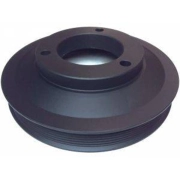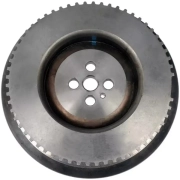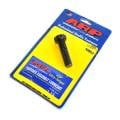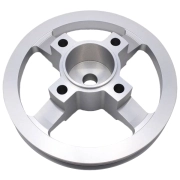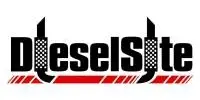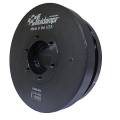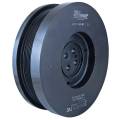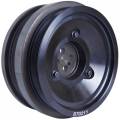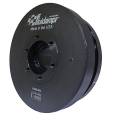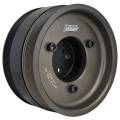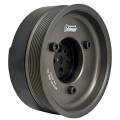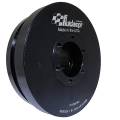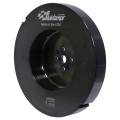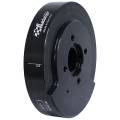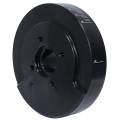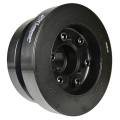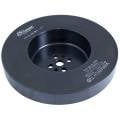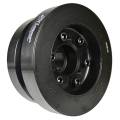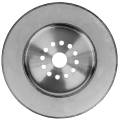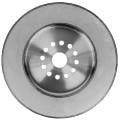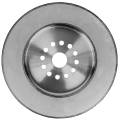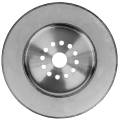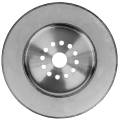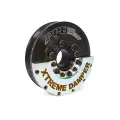NEW Volvo & Mack E7 Harmonic Balancer / Crank Damper | 25097232, 404GB490 | Volvo / Mack E7 & ASET Engines
New
OE Cross: 404GB469, 404GB453A
1 Year Warranty
Picture is REPRESENTATIONAL of what you will recieve
Item #: 404GB490
Freedom Engine & Transmissions
USD
999.95
Freedom Engine
Description:
OE Cross: 404GB469, 404GB453A
1 Year Warranty
Picture is REPRESENTATIONAL of what you will recieve
Item #: 404GB490
Condition:
New
Price: $2,000.00
Sale: $999.95
Save: 50%
Save: $1000.05
NEW Cummins ISX Harmonic Balancer / Crank Damper | 3680504, 4026799, 4101884 | Cummins ISX
New
OE Cross: 3680504, 4026799, 4101884
1 Year Warranty
Item #: 4101884
Freedom Engine & Transmissions
USD
558.95
Freedom Engine
Description:
OE Cross: 3680504, 4026799, 4101884
1 Year Warranty
Item #: 4101884
Condition:
New
Price: $600.00
Sale: $558.95
Save: 7%
Save: $41.05
NEW 07-18 Dodge RAM 6.7 Cummins Harmonic Balancer / Dampener | 68005166AA, 68143868AA, 68206038AB, 68252443AA | 2007-2018 Dodge RAM Cummins 6.7L
New
Cross-Reference Numbers:
68005166AA, 68143868AA, 68206038AB, 68252443AA
Item #: 68005166AA
Freedom Injection
USD
500.00
Freedom Injection
Description: Cross-Reference Numbers:
68005166AA, 68143868AA, 68206038AB, 68252443AA
Item #: 68005166AA
Condition:
New
Price: $500.00
Sale: $699.95
Save: -40%
Save: $-199.95
NEW Volvo & Mack E6 Harmonic Balancer / Crank Damper | 404GB469, 404GB453A | Volvo / Mack E6 2 & 4 Valve
New
OE Cross: 404GB469, 404GB453A
1 Year Warranty
Picture is REPRESENTATIONAL of what you will recieve
Item #: 404GB469
Freedom Engine & Transmissions
USD
499.95
Freedom Engine
Description:
OE Cross: 404GB469, 404GB453A
1 Year Warranty
Picture is REPRESENTATIONAL of what you will recieve
Item #: 404GB469
Condition:
New
Price: $600.00
Sale: $499.95
Save: 17%
Save: $100.05
NEW Detroit S60 Harmonic Balancer / Crank Damper | 23525990, 8929502, 08929502 | Detroit Diesel S50 8.5L, S60 12.7L
New
OE Cross: 23525990, 8929502, 08929502
1 Year Warranty
Item #: 23525990
Freedom Engine & Transmissions
USD
497.95
Freedom Engine
Description:
OE Cross: 23525990, 8929502, 08929502
1 Year Warranty
Item #: 23525990
Condition:
New
Price: $600.00
Sale: $497.95
Save: 17%
Save: $102.05
NEW Caterpillar 3406 & C15 Harmonic Balancer / Crank Vibration Damper | 7E9520, 167-8126, 1678126 | Caterpillar 3406C, 3406E, C15, C16
New
OE Cross: 7E9520, 1678126, 1084097, 2P4645, 2P5149, 4P4297, 9Y4851
1 Year Warranty
Item #: 1678126
Freedom Engine & Transmissions
USD
449.95
Freedom Engine
Description:
OE Cross: 7E9520, 1678126, 1084097, 2P4645, 2P5149, 4P4297, 9Y4851
1 Year Warranty
Item #: 1678126
Condition:
New
Price: $600.00
Sale: $449.95
Save: 25%
Save: $150.05
NEW Cummins 6C, ISC, ISL Harmonic Balancer / Dampener | 3925569, 3922559, 3922569 | Cummins 6C / ISC / ISL
New
OE Cross:
3925569, 3922559, 3922569
Item #: 3925569
Freedom Engine & Transmissions
USD
449.95
Freedom Engine
Description: OE Cross:
3925569, 3922559, 3922569
Item #: 3925569
Condition:
New
Price: $600.00
Sale: $449.95
Save: 25%
Save: $150.05
NEW Cummins L10, M11, ISM, QSM Harmonic Balancer / Crank Damper | 3073587, 3161942 | Cummins L10 / M11 / ISM / QSM
New
OE Cross: 3073587, 3161942
1 Year Warranty
Item #: 3161942
Freedom Engine & Transmissions
USD
449.95
Freedom Engine
Description:
OE Cross: 3073587, 3161942
1 Year Warranty
Item #: 3161942
Condition:
New
Price: $600.00
Sale: $449.95
Save: 25%
Save: $150.05
NEW Ford 6.0 Powerstroke Performance Harmonic Balancer / Vibration Dampner | 3C3Z6312BA, 3C3Z6312CA | 2003-2007 Ford Powerstroke 6.0L
New
Item #: 3C3Z6312BA-R
Freedom Engine & Transmissions
USD
449.95
Freedom Engine
Item #: 3C3Z6312BA-R
Condition:
New
Price: $630.70
Sale: $449.95
Save: 29%
Save: $180.75
NEW Volvo & Mack E6 Harmonic Balancer / Crank Damper | 404GB488, 404GB470, 404GB461A, 404GB462 | Volvo / Mack E6 2 & 4 Valve
New
OE Cross: 404GB488, 404GB470, 404GB461A, 404GB462
1 Year Warranty
Picture is REPRESENTATIONAL of what you will recieve
Item #: 404GB488
Freedom Engine & Transmissions
USD
449.95
Freedom Engine
Description:
OE Cross: 404GB488, 404GB470, 404GB461A, 404GB462
1 Year Warranty
Picture is REPRESENTATIONAL of what you will recieve
Item #: 404GB488
Condition:
New
Price: $600.00
Sale: $449.95
Save: 25%
Save: $150.05
NEW Volvo & Mack E7 Harmonic Balancer / Crank Damper | 20706589, 404GB498B, 404GB492 | Volvo / Mack E7, E-TECH & ASET Engines
New
OE Cross: 20706572, 20706589, 404GB498B, 404GB492, 404GB498A, 404GB498, 404GB498C, 20706572, 20706589
1 Year Warranty
Picture is REPRESENTATIONAL of what you will recieve
Item #: 404GB498B
Freedom Engine & Transmissions
USD
449.95
Freedom Engine
Description:
OE Cross: 20706572, 20706589, 404GB498B, 404GB492, 404GB498A, 404GB498, 404GB498C, 20706572, 20706589
1 Year Warranty
Picture is REPRESENTATIONAL of what you will recieve
Item #: 404GB498B
Condition:
New
Price: $1,000.00
Sale: $449.95
Save: 55%
Save: $550.05
NEW Cummins N14 Harmonic Balancer / Crank Damper | 3101655, 217323, 4987064 | Cummins 855 / N14
New
OE Cross: 3101655, 217323, 4987064, 211915, 211916, 215506, 203898, AR10319
1 Year Warranty
Item #: 3101655
Freedom Engine & Transmissions
USD
422.95
Freedom Engine
Description:
OE Cross: 3101655, 217323, 4987064, 211915, 211916, 215506, 203898, AR10319
1 Year Warranty
Item #: 3101655
Condition:
New
Price: $600.00
Sale: $422.95
Save: 30%
Save: $177.05
NEW 03-09 Dodge 5.9 Cummins Harmonic Balancer & Dampener | 3957297, 5086735AA, 594-356 | 2003-2009 Dodge Cummins 5.9L
New
OE Cross:
3957297, 5086735AA, 594-356
Item #: 5086735AA
Freedom Injection
USD
399.95
Freedom Injection
Description: OE Cross:
3957297, 5086735AA, 594-356
Item #: 5086735AA
Condition:
New
Price: $400.00
Sale: $399.95
Save: 0%
Save: $0.05
NEW Ford 6.4 Powerstroke Harmonic Balancer / Vibration Dampner | 800211, 8C3Z6312B | 2008-2010 Ford Powerstroke 6.4L
New
Item #: FI-800211
Freedom Injection
USD
329.95
Freedom Injection
Item #: FI-800211
Condition:
New
Price: $630.70
Sale: $329.95
Save: 48%
Save: $300.75
New LMM & LBZ Duramax Harmonic Balancer / Dampener | 97374383, SPN019298 | 2006-2010 GM Duramax LMM / LBZ 6.6L
New
Item #: 97374383
Freedom Injection
USD
249.95
Freedom Injection
Item #: 97374383
Condition:
New
Price: $600.00
Sale: $249.95
Save: 58%
Save: $350.05
NEW 5.9 Dodge Cummins Harmonic Balancer & Dampener | 5011800AA, 5011830AA | 1999-2002 Dodge Cummins 5.9L
New
OE Cross:
5011800AA, 5011830AA
Item #: 5011800AA
Freedom Injection
USD
209.95
Freedom Injection
Description: OE Cross:
5011800AA, 5011830AA
Item #: 5011800AA
Condition:
New
Price: $600.00
Sale: $209.95
Save: 65%
Save: $390.05
New 98.5-02 5.9 Cummins Harmonic Balancer / Dampener | 3915069, 3918999, 6735-31-8120, 6735318120 | 1998.5-2002 Cummins 5.9L 6B / ISB / QSB
New
OE Cross:
3915069, 3918999, 6735-31-8120, 6735318120
Item #: 3918999
Freedom Injection
USD
209.95
Freedom Injection
Description: OE Cross:
3915069, 3918999, 6735-31-8120, 6735318120
Item #: 3918999
Condition:
New
Price: $600.00
Sale: $209.95
Save: 65%
Save: $390.05
NEW Cummins 6CT Harmonic Balancer / Dampener | 3912543, 3914450, 3925560 | Cummins 6CT 8.3L
New
OE Cross:
3907615, 3911330, 3912543, 3914450, 3925560, J925568, J914456, J912681, J914455, A77816, 6742-01-5289
Item #: 3925560
Freedom Engine & Transmissions
USD
209.95
Freedom Engine
Description: OE Cross:
3907615, 3911330, 3912543, 3914450, 3925560, J925568, J914456, J912681, J914455, A77816, 6742-01-5289
Item #: 3925560
Condition:
New
Price: $400.00
Sale: $209.95
Save: 48%
Save: $190.05
New LB7 & LLY Duramax Harmonic Balancer / Dampener | 97225896, 97328573, 97780412 | 2001-2005 GM Duramax LB7 / LLY 6.6L
New
Item #: 97225896
Freedom Injection
USD
189.95
Freedom Injection
Item #: 97225896
Condition:
New
Price: $600.00
Sale: $189.95
Save: 68%
Save: $410.05
NEW Ford 6.0 Powerstroke Harmonic Balancer / Vibration Dampner | 3C3Z6312BA, 3C3Z6312CA | 2003-2007 Ford Powerstroke 6.0L
New
Item #: 3C3Z6312BA
Freedom Injection
USD
179.95
Freedom Injection
Item #: 3C3Z6312BA
Condition:
New
Price: $630.70
Sale: $179.95
Save: 71%
Save: $450.75
NEW Ford 6.7 Powerstroke Harmonic Balancer / Vibration Dampner | 800221, PC3Z6312A | 2011-2022 Ford Powerstroke 6.7L
New
Item #: FI-800221
Freedom Injection
USD
179.95
Freedom Injection
Item #: FI-800221
Condition:
New
Price: $630.70
Sale: $179.95
Save: 71%
Save: $450.75
New LML Duramax Harmonic Balancer / Dampener | 98062792, 12662602, 12651599 | 2011-2016 GM Duramax LML 6.6L
New
OE Cross:
12651599, 12662602, 12674750, 19432547, 98062792
Item #: 98062792
Freedom Injection
USD
179.95
Freedom Injection
Description: OE Cross:
12651599, 12662602, 12674750, 19432547, 98062792
Item #: 98062792
Condition:
New
Price: $600.00
Sale: $179.95
Save: 70%
Save: $420.05
NEW Cummins 6CT Harmonic Balancer / Dampener | 3922557, 3925567 | Cummins 6CT 8.3L
New
OE Cross:
3922557, 3925567
Item #: 3922557
Freedom Engine & Transmissions
USD
149.95
Freedom Engine
Description: OE Cross:
3922557, 3925567
Item #: 3922557
Condition:
New
Price: $400.00
Sale: $149.95
Save: 63%
Save: $250.05
NEW Ford 6.7L Powerstroke Harmonic Balancer | BC3Z6312B, BC3Z6312CA, FC3Z6312B, LC3Z6312C | 2011-2019 Ford Powerstroke 6.7L
New
OEM Crosses:
BC3Z6312B, BC3Z6312CA, FC3Z6312B, LC3Z6312C
Item #: BC3Z-6312-B
Freedom Engine & Transmissions
USD
149.95
Freedom Engine
Description: OEM Crosses:
BC3Z6312B, BC3Z6312CA, FC3Z6312B, LC3Z6312C
Item #: BC3Z-6312-B
Condition:
New
Price: $600.00
Sale: $149.95
Save: 75%
Save: $450.05
NEW Ford 7.3 Powerstroke Harmonic Balancer | F5TZ6316AA, F81Z6316AA | 1995-2003 Ford Powerstroke 7.3L
New
OE Cross:
1826762C92, F3TZ6316A, F4TZ6316A, F5TZ6316AA, F81Z6316AA
Item #: F5TZ6316AA
Freedom Injection
USD
129.95
Freedom Injection
Description: OE Cross:
1826762C92, F3TZ6316A, F4TZ6316A, F5TZ6316AA, F81Z6316AA
Item #: F5TZ6316AA
Condition:
New
Price: $600.00
Sale: $129.95
Save: 78%
Save: $470.05
New 97-17 GM V8 5.7 & 6.0 Harmonic Balancer | 12553474, 12560115, 12601402 | 1997-2017 GM V8 5.7L / 6.0L
New
OE Cross:
12553474, 12560115, 12601402, 12620556, 12635649, 12674582
Item #: 12553474
Freedom Auto Parts
USD
109.95
Freedom Auto Parts
Description: OE Cross:
12553474, 12560115, 12601402, 12620556, 12635649, 12674582
Item #: 12553474
Condition:
New
NEW 5.9 Cummins 12V Harmonic Balancer & Dampener | 3914454, 3916436 | 1988-1993 Dodge Cummins 5.9L
New
OE Cross: 3914454, 3916436
Item #: 3914454
Freedom Injection
USD
97.95
Freedom Injection
Description: OE Cross: 3914454, 3916436
Item #: 3914454
Condition:
New
New 70-80 GM 400ci V8 Harmonic Balancer | 6272225 | 1970-1980 GM V8 6.6L
New
OE Cross:
6272225
Item #: 6272225
Freedom Auto Parts
USD
84.95
Freedom Auto Parts
Description: OE Cross:
6272225
Item #: 6272225
Condition:
New
NEW Ford 6.0 Powerstroke Harmonic Balancer Pulley | 3C3Z6312AA | 2003-2007 Ford Powerstroke 6.0L
New
Item #: 3C3Z6312AA
Freedom Engine & Transmissions
USD
74.99
Freedom Engine
Item #: 3C3Z6312AA
Condition:
New
Price: $630.70
Sale: $74.99
Save: 88%
Save: $555.71
OEM Cummins 6.7 Dodge RAM Harmonic Balancer / Dampener | 5333569 | 2007-2018 Dodge RAM Cummins 6.7L
New
OE Cross: 68005166AA, 68143868AA, 68206038AB, 68252443AA
Item #: 5333569
Cummins
USD
649.95
Cummins
Description: OE Cross: 68005166AA, 68143868AA, 68206038AB, 68252443AA
Item #: 5333569
Condition:
New
ARP 5.9 Cummins Harmonic Damper Bolt Kit | 147-2502 | 1989-2007 Dodge Cummins 5.9L
New
Item #: 147-2502
ARP
USD
49.95
ARP
Item #: 147-2502
Condition:
New
Price: $56.95
Sale: $49.95
Save: 12%
Save: $7.00
ARP Dodge RAM 6.7L Cummins Harmonic Damper Bolt Kit | 147-2503 | 2007.5-2018 Dodge RAM Cummins 6.7L
New
Item #: 147-2503
ARP
USD
49.95
ARP
Item #: 147-2503
Condition:
New
Price: $56.95
Sale: $49.95
Save: 12%
Save: $7.00
ARP Ford 6.0L & 6.4L Powerstroke Harmonic Dampener Bolt Kit | 150-2505 | 2003-2010 Ford Powerstroke 6.0L & 6.4L
New
Item #: 150-2505
ARP
USD
59.95
ARP
Item #: 150-2505
Condition:
New
Price: $65.95
Sale: $59.95
Save: 9%
Save: $6.00
ARP Ford 6.7L Powerstroke Harmonic Dampener Bolt Kit | 150-2504 | 2011-2023 Ford Powerstroke 6.7L
New
Item #: 150-2504
ARP
USD
49.95
ARP
Item #: 150-2504
Condition:
New
Price: $56.95
Sale: $49.95
Save: 12%
Save: $7.00
ARP GM 6.6 Duramax Harmonic Damper Bolt | 129-2503 | 2001+ GM Duramax 6.6L
New
Item #: 129-2503
ARP
USD
34.95
ARP
Item #: 129-2503
Condition:
New
Price: $39.99
Sale: $34.95
Save: 13%
Save: $5.04
DieselSite 6.5 GM Billet Aluminum Harmonic Balancer Pulley | 1993-2000 GM 6.5L
New
Item #: HBPULLEY65
DieselSite
USD
245.00
DieselSite
Item #: HBPULLEY65
Condition:
New
Fluidampr 01-05 GM Harmonic Balancer | 890101 | 2001-2005 GM Duramax LLY / LB7 6.6L
New
Item #: 890101
Fluidampr
USD
563.55
Fluidampr
Item #: 890101
Condition:
New
Price: $630.70
Sale: $563.55
Save: 11%
Save: $67.15
Fluidampr 03-07 6.0L Powerstroke Harmonic Balancer | 870201 | 2003-2007 Ford Powerstroke 6.0L w/ Single Alternator
New
For vehicles with ONE alternator
Item #: 870201
Fluidampr
USD
563.55
Fluidampr
Description: For vehicles with ONE alternator
Item #: 870201
Condition:
New
Price: $630.70
Sale: $563.55
Save: 11%
Save: $67.15
Fluidampr 03-07 6.0L Powerstroke Harmonic Balancer | 870211 | 2003-2007 Ford Powerstroke 6.0L w/ Dual Alternators
New
For vehicles with DUAL alternators
Item #: 870211
Fluidampr
USD
790.50
Fluidampr
Description: For vehicles with DUAL alternators
Item #: 870211
Condition:
New
Fluidampr 03-09 Dodge 5.9 Cummins Harmonic Balancer | 920301 | 2003-2009 Dodge Cummins 5.9L
New
Item #: 920301
Fluidampr
USD
630.70
Fluidampr
Item #: 920301
Condition:
New
Fluidampr 06-10 GM Harmonic Balancer | 830111 | 2006-2010 GM Duramax LBZ / LMM 6.6L
New
Item #: 830111
Fluidampr
USD
563.55
Fluidampr
Item #: 830111
Condition:
New
Price: $630.70
Sale: $563.55
Save: 11%
Save: $67.15
Fluidampr 07.5+ Dodge RAM Cummins Harmonic Balancer | 920321 | 2007.5+ Dodge RAM Cummins 6.7L
New
Item #: 920321
Fluidampr
USD
630.70
Fluidampr
Item #: 920321
Condition:
New
Fluidampr 08-10 6.4L Powerstroke Harmonic Balancer | 800211 | 2008-2010 Ford Powerstroke 6.4L
New
Item #: 800211
Fluidampr
USD
630.70
Fluidampr
Item #: 800211
Condition:
New
Fluidampr 11-17 GM Harmonic Balancer | 830111 | 2011-2017 GM Duramax LML / LGH
New
Item #: 830111
Fluidampr
USD
563.55
Fluidampr
Item #: 830111
Condition:
New
Price: $630.70
Sale: $563.55
Save: 11%
Save: $67.15
Fluidampr 11-18 6.7L Powerstroke Harmonic Balancer | 800221 | 2011-2018 Ford Powerstroke 6.7L
New
Item #: 800221
Fluidampr
USD
608.60
Fluidampr
Item #: 800221
Condition:
New
Price: $630.70
Sale: $608.60
Save: 4%
Save: $22.10
Fluidampr 17-19 GM Harmonic Balancer | 830141 | 2017-2019 GM Duramax L5P 6.6L
New
Item #: 830141
Fluidampr
USD
563.55
Fluidampr
Item #: 830141
Condition:
New
Price: $630.70
Sale: $563.55
Save: 11%
Save: $67.15
Fluidampr 20+ GM Harmonic Balancer | 830151 | 2020+ GM Duramax L5P 6.6L
New
Item #: 830151
Fluidampr
USD
685.10
Fluidampr
Item #: 830151
Condition:
New
Fluidampr 5.9L & 3.9L Dodge Cummins Harmonic Balancer | 960311 | 1989-1998 Dodge Cummins 5.9L 12V & 4BT
New
Item #: 960311
Fluidampr
USD
630.70
Fluidampr
Item #: 960311
Condition:
New
Fluidampr 82-93 6.2L / 6.5L GM Diesel Harmonic Balancer | 800191 | 1982-1993 GM 6.2L & 6.5L
New
Item #: 800191
Fluidampr
USD
563.55
Fluidampr
Item #: 800191
Condition:
New
Price: $630.70
Sale: $563.55
Save: 11%
Save: $67.15
Fluidampr 94-18 6.2L / 6.5L GM Diesel Harmonic Balancer | 800141 | 1994-2018 GM 6.2L & 6.5L w/ Electronic Fuel Pump
New
Will also fit AMG crate engines up to 2018--per Fluidampr
Item #: 800141
Fluidampr
USD
563.55
Fluidampr
Description: Will also fit AMG crate engines up to 2018--per Fluidampr
Item #: 800141
Condition:
New
Price: $630.70
Sale: $563.55
Save: 11%
Save: $67.15
Fluidampr 94-97 7.3L Powerstroke Harmonic Balancer | 720221 | 1994-1997 Ford Powerstroke 7.3L
New
Item #: 720221
Fluidampr
USD
608.60
Fluidampr
Item #: 720221
Condition:
New
Price: $630.70
Sale: $608.60
Save: 4%
Save: $22.10
Fluidampr 98.5-02 5.9L Dodge Cummins Harmonic Balancer | 960311 | 1998.5-2002 Dodge Cummins 5.9L 24V
New
Item #: 960301
Fluidampr
USD
563.55
Fluidampr
Item #: 960301
Condition:
New
Price: $630.70
Sale: $563.55
Save: 11%
Save: $67.15
Fluidampr 99-03 7.3L Powerstroke Harmonic Balancer | 720211 | 1999-2003 Ford Powerstroke 7.3L
New
Item #: 720211
Fluidampr
USD
563.55
Fluidampr
Item #: 720211
Condition:
New
Price: $630.70
Sale: $563.55
Save: 11%
Save: $67.15
PDI CAT Crank Damper | CAT C15 / C16 / 3408 / 3406 (A,B,C,E,PC) Adapter plate Incl.
New
OE Cross:
7E9520 , 1678126
Item #: 171000716405
PDI
USD
625.00
PDI
Description: OE Cross:
7E9520 , 1678126
Item #: 171000716405
Condition:
New
PDI CAT Crank Damper | Caterpillar C10 / C12 / C13
New
OE Cross:
167-8125
Item #: 171000716164
PDI
USD
650.00
PDI
Description: OE Cross:
167-8125
Item #: 171000716164
Condition:
New
PDI Cummins ISX Crank Damper | Cummins ISX15 & X15
New
OE Cross:
4101884, 4026799, 3680504
Item #: 171000718041
PDI
USD
645.00
PDI
Description: OE Cross:
4101884, 4026799, 3680504
Item #: 171000718041
Condition:
New
PDI Cummins N14 Crank Damper | Cummins N14
New
OE Cross:
3101655
Item #: 171000718018
PDI
USD
740.00
PDI
Description: OE Cross:
3101655
Item #: 171000718018
Condition:
New
PDI Detroit S60 Crank Damper | Detroit Diesel S60 11.1L / 12.7L
New
OE Cross:
23525990, 8929502
Item #: 171000716852
PDI
USD
640.00
PDI
Description: OE Cross:
23525990, 8929502
Item #: 171000716852
Condition:
New
PDI Detroit S60 Crank Damper | Detroit Diesel S60 14.0L
New
OE Cross:
23531040, 23522891
Item #: 171000717406
PDI
USD
730.00
PDI
Description: OE Cross:
23531040, 23522891
Item #: 171000717406
Condition:
New
PPE LML XTREME Damper | 2001-2016 GM Duramax 6.6L
New
OEM Reference #: 1850352C2, S35801
Item #: 118010000
PPE
USD
599.99
PPE
Description: OEM Reference #: 1850352C2, S35801
Item #: 118010000
Condition:
New
